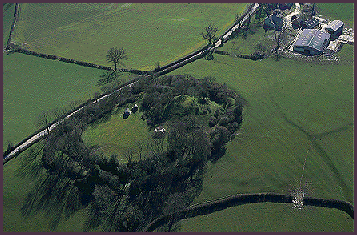 |
Hendomen 2
A Norman family transplanted
|
|
For many years it was assumed that Roger crossed the channel
with William in 1066 and took part in the battle of Hastings,
but it is now believed that he remained in Normandy as a trusted
Seigneur of William and joined a council with Mathilda, William’s
wife, to rule and protect the Dukedom while William campaigned
in England. The Conqueror’s land was often threatened by
his neighbours and he held an uneasy peace with the French king.
Roger also claimed kinship with William. His father, Roger the
First, married a niece [Josceline] of Gunnor, Duke Richard the
First’s wife and much improved his position - further added
to by plundering the church. Roger the Second took part in the
siege of Domfront in southern Normandy and, as was his father
before him, was made Count of the Hiémois, he married
Mabel of Belleme, to acquire her land and power and secondly,
Adelaide of Puiset. |
|
Today one can see, in the recently restored castle at Falaise
in the South of Normandy, a large plaque with the names of 315
seignieurs or barons who came to England with William. Roger's
name is on the list but it is known that he did not cross the
channel until December 1067, a year after William had been crowned
King of England at Westminster Abbey on Christmas Day 1066. The
plaque was removed to the Hotel de Ville at the entrance to the
castle grounds while restoration work was in progress in the
1990’s. |
|
When Roger eventually crossed to England and erected his timber
castle at Montgomery, he gave it the name of his ancestral home
in the department of Calvados. Some 150 years later the name
was given to the stone castle a mile or so to the south and eventually
to the county which came in to being in 1535. It is the only
county in the United Kingdom to hold a Norman name. |
|
Aerial view of Hendomen from the
North with the modern farm top right and the medieval field system
just visible to the right of the monument.
By kind permission of the Clwyd-Powys
Archaeological Trust |

|
|
|
Today’s visitor to this motte will not fail to be impressed
by the well chosen site, even though trees obscure some of the
view, a view which would have been more impressive from the top
of the wooden tower. What height this tower reached, we do not
know, but it would have been sufficient to have given oversight
of the Rhydwyman crossing of the River Severn which flows to
the north; a shallow crossing which played an important part
in the history of this area for years to come. |
|
|
There are 7 pages on the norman origins
of Hendomen. Use the box links below to view the other pages |

|
       |

|

|

